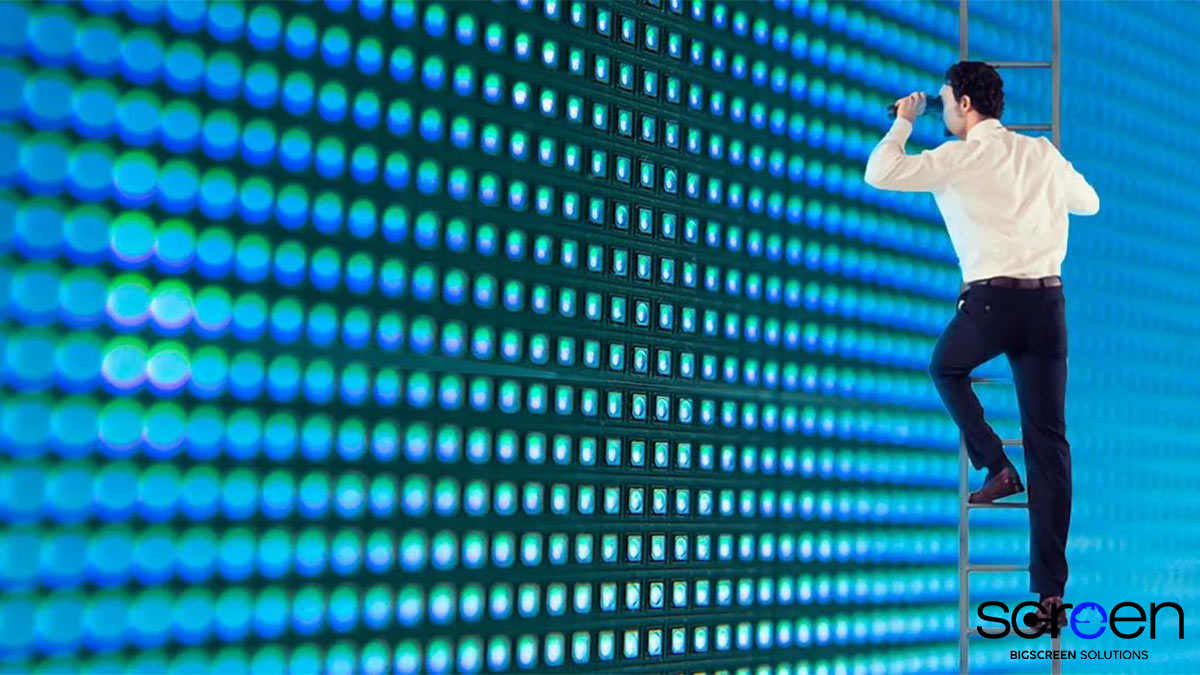As LED technology continues to evolve, one of the most crucial factors influencing the performance and cost of an LED video wall is Pixel Pitch in LED Video Wall systems. Whether for indoor displays in corporate environments or expansive outdoor digital billboards, pixel pitch plays a decisive role in image quality, viewer experience, and overall display effectiveness.
In this comprehensive guide, we’ll explore everything you need to know about pixel pitch—what it means, why it matters, how to choose the right pixel pitch, and the differences it makes in different LED wall applications.
Understanding Pixel Pitch in LED Video Wall Technology
![]()
At its core, Pixel Pitch in LED Video Wall refers to the distance, measured in millimeters, between the centers of two adjacent LED pixels on a display panel. For example, a pixel pitch of 1.2mm means each LED cluster is 1.2mm away from the next.
This measurement directly affects image resolution and clarity. A smaller pixel pitch indicates more pixels per square meter, which leads to sharper images, especially when viewed from close distances. Larger pixel pitches are more suitable for long-distance viewing, such as billboards or stadium screens.
When choosing between high-definition visuals or cost-efficiency, understanding the trade-offs in pixel pitch becomes essential.
Why Pixel Pitch in LED Video Wall Matters
The pixel pitch of an LED wall is not just a technical specification—it’s a performance benchmark. It influences several key aspects of display quality:
- Viewing Distance: Smaller pixel pitches allow for closer viewing without pixelation.
- Image Quality: Higher pixel density provides superior clarity and detail.
- Cost: Smaller pixel pitch displays are more expensive due to the higher number of LEDs required.
- Size and Layout Flexibility: Pixel pitch affects how large a screen can be while maintaining a desired resolution.
For example, a control room or retail display might use a 1.2mm pixel pitch, while a sports stadium could use a 10mm or even larger pitch due to the longer viewing distance.
Understanding these factors can help you evaluate the most appropriate Pixel pitch LED wall for your specific use case.
Pixel Pitch in LED Video Wall vs. LED Wall Pixel Size
While pixel pitch and LED wall pixel size are often used interchangeably, there’s a subtle difference. Pixel size refers to the actual physical dimension of each LED module, while pixel pitch indicates the spacing between those modules. These two factors combined determine the display’s resolution and quality.
A tightly packed screen (small pitch and small pixel size) will offer more pixels per inch, leading to sharper images. For instance, a high-end broadcast studio may opt for a pitch of 0.9mm for the best quality visuals.
So, if you’re aiming for maximum visual fidelity in a tight space, minimizing LED wall pixel size is as crucial as reducing the pixel pitch.
Recommended Pixel Pitch in LED Video Wall for Common Viewing Distances
Here’s a basic rule of thumb when choosing the right Pixel Pitch in LED Video Wall setups based on the average viewing distance:
- 1.2mm – 2mm: Best for indoor environments where viewers are within 3-5 feet.
- 2.5mm – 4mm: Ideal for mid-sized venues like hotel lobbies or small event halls.
- 5mm – 10mm: Suitable for outdoor displays and larger venues.
- 10mm+: Great for stadiums, roadside signage, and large-scale public displays.
An essential tip is to match the pixel pitch to the minimum viewing distance to avoid visual distortion or pixelation.
Practical Use Cases and Pixel Pitch Choices
Indoor Applications
In indoor setups like conference halls, boardrooms, or shopping malls, clarity is critical. These applications typically require tight pixel pitches, often below 2mm, to maintain high visual fidelity at close range. High-end displays also benefit from better grayscale reproduction. Professionals often consult guides like Understanding LED Screen Grayscale to fine-tune brightness and shading for optimal presentation.
Outdoor Installations
Outdoor LED walls often serve larger audiences from greater distances. Here, pixel pitches ranging from 6mm to 16mm are common. These screens must also withstand harsh weather, which makes Waterproof LED Display Screens essential for maintaining performance and longevity.
Whether for indoor finesse or outdoor impact, matching the pitch to the environment enhances both user experience and ROI.
How Pixel Pitch in LED Video Wall Affects Price
One of the major influences on pricing is pixel pitch. A smaller pitch means more LEDs per panel and a more complex manufacturing process. For example, a 1.5mm LED wall can be two to three times more expensive than a 4mm counterpart of the same size.
Still, the visual payoff is immense—especially for brands that rely heavily on immersive digital signage. In some cases, instead of purchasing a screen outright, it may be smarter to hire led screen services for short-term use, such as concerts or marketing campaigns.
This method provides access to premium pixel pitch displays without the long-term financial commitment.
How to Choose the Right Pixel Pitch in LED Video Wall
Selecting the ideal pixel pitch involves balancing resolution needs, budget constraints, and environmental factors. Here’s what you should consider:
- Minimum Viewing Distance: Use pixel pitch approximately equal to or slightly less than the distance in meters.
- Content Type: Highly detailed visuals require a tighter pixel pitch.
- Ambient Light: Brighter settings may need higher brightness and appropriate contrast levels.
- Budget: Determine if premium image quality is worth the extra investment.
A great reference for this decision-making process is How to Choose the Right LED Screen for Your Event?, which explains how venue, audience, and content type affect LED screen selection.
Pixel Pitch Trends and Innovations
![]()
With micro-LED technology and advanced manufacturing, we’re seeing pixel pitches as low as 0.7mm becoming more accessible. These displays offer near-seamless imagery, particularly in mission-critical applications like broadcast studios and high-end retail.
Despite the rise of ultra-fine pitch displays, larger pitch screens remain cost-effective and visually powerful for large-scale and long-distance displays.
For businesses weighing long-term investments, Things to Consider When Buying a LED Display offers helpful insight into choosing based on durability, future-proofing, and ROI.
Energy Efficiency and Pixel Pitch
Another often overlooked aspect is power consumption. Smaller pitch screens tend to consume more energy due to their denser LED configurations. However, advancements in energy-saving circuits and smart sensors are narrowing this gap.
You can dive deeper into this with A Power Consumption Comparison of LED Display Technologies, which examines efficiency across different pixel pitch and LED types.
Event-Based Use and Rental Solutions
For temporary use cases like music festivals, expos, or sports events, investing in a permanent screen may not be practical. Instead, businesses often turn to rental services.
There are countless advantages, as outlined in The Benefits of Hiring an LED Screen—from access to the latest technology to flexible configurations for any venue.
When pixel clarity and portability both matter, rental LED walls with variable pitches (modular panels) allow event organizers to customize visuals for audience distance and size.
LED Sign in Retail Environments
A fashion retailer recently deployed a sleek LED Sign inside a flagship store using a 1.2mm pixel pitch screen. The result was an ultra-crisp display of fabric textures and runway videos, which captivated shoppers and elevated the brand experience.
This kind of high-resolution, immersive environment would not be possible without the appropriate understanding of Pixel Pitch in LED Video Wall selection.
Final Thoughts
Pixel Pitch in LED Video Wall configurations is far more than a technical detail—it’s a strategic design choice that impacts image quality, audience experience, and long-term value. As LED technology becomes increasingly mainstream, understanding pixel pitch empowers businesses to make smarter, more effective display decisions.
Whether you’re planning a permanent installation or a one-time event, evaluating Pixel pitch LED wall options with a clear grasp of viewing distance, resolution needs, and budget considerations is key.
Smaller LED wall pixel size and tighter pitches offer better clarity for closer audiences, while larger pitches remain ideal for high-impact visuals viewed from afar.
So the next time you find yourself considering a video wall solution, remember—Pixel Pitch in LED Video Wall is not just a number, it’s a foundational element of your display’s success.




